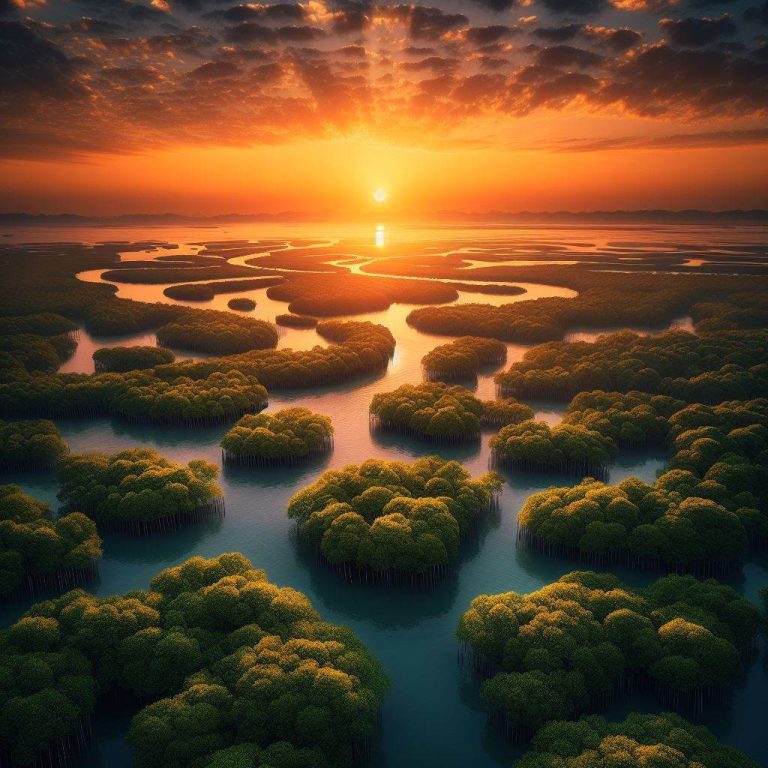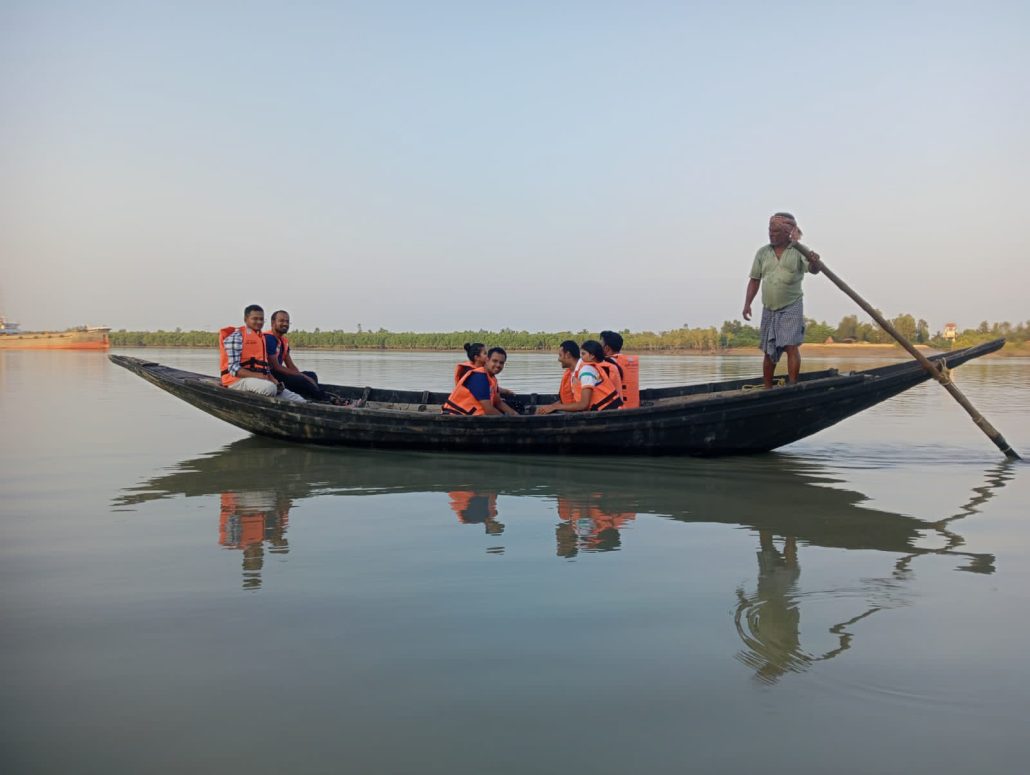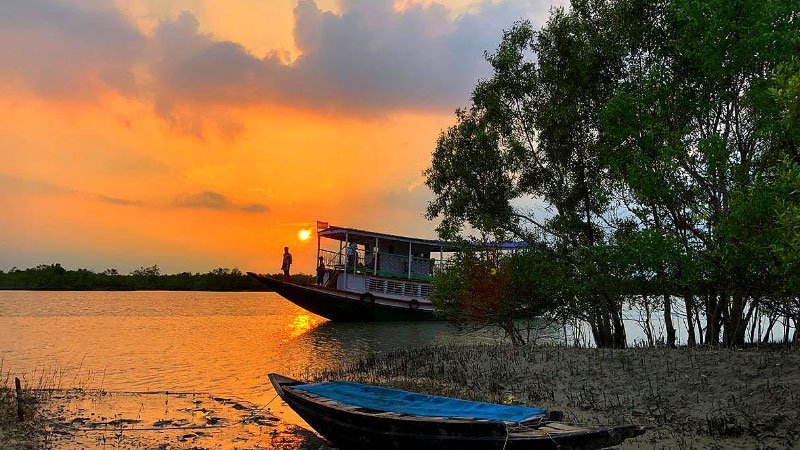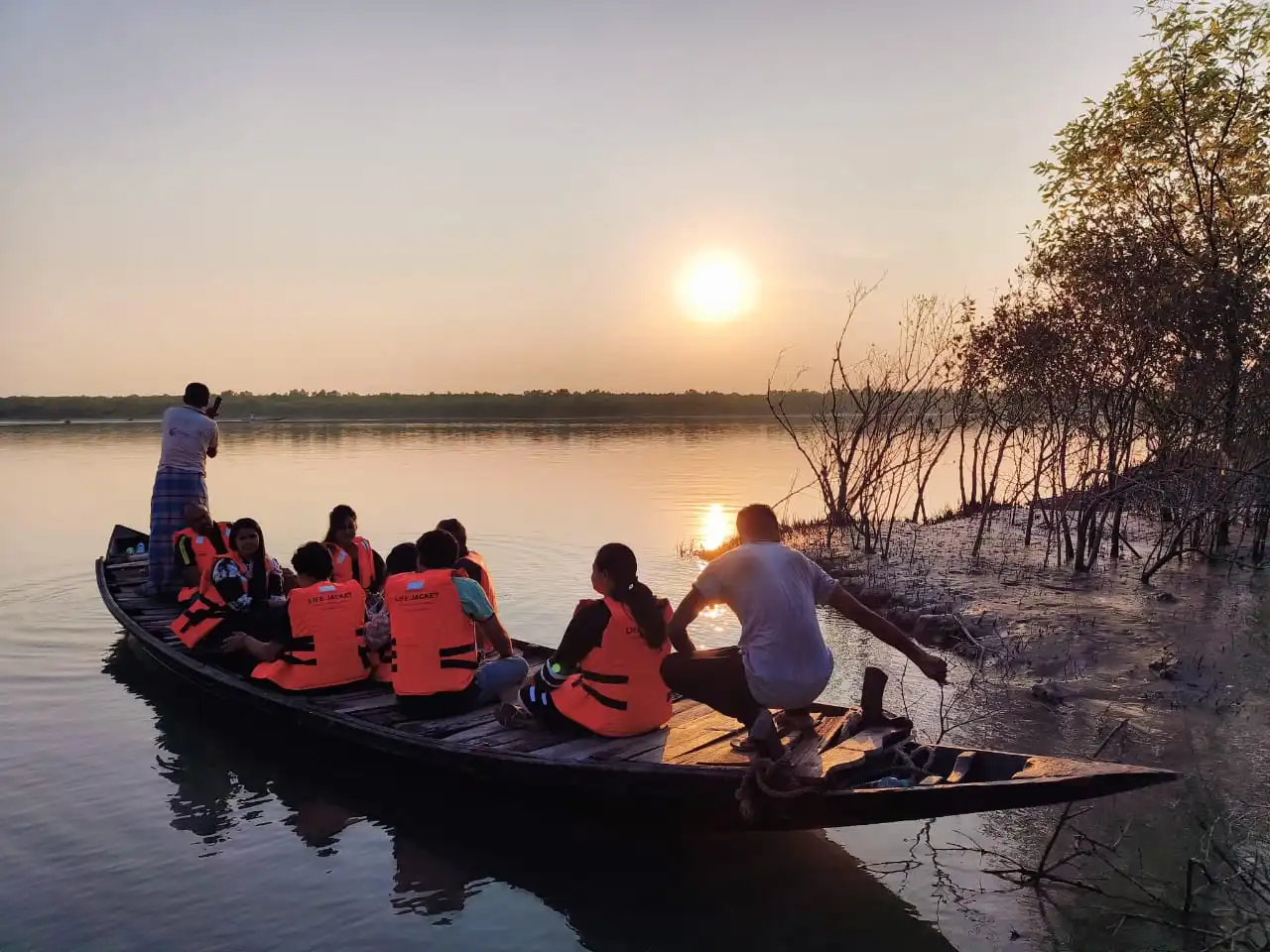Photography Tips for Sundarban Tours: The Sundarbans, with its unique mangrove forests, abundant wildlife, and breathtaking landscapes, is a paradise for nature and wildlife photographers. This UNESCO World Heritage Site is one of the most biodiverse regions on Earth, offering endless opportunities for capturing stunning images. From the majestic Royal Bengal Tiger to vibrant bird species and serene waterways, the Sundarbans is a destination that promises extraordinary photographic moments. We can check more about “Photography Tips for Sundarban Tours”.

However, photographing in the Sundarbans presents its own set of challenges—dense mangroves, unpredictable weather, and elusive wildlife can test even the most seasoned photographers. Whether you’re an amateur or a professional photographer, being well-prepared can make all the difference in capturing that perfect shot. In this blog, we’ll explore essential photography tips to help you make the most of your Sundarban tour, with a special focus on how Royal Sundarban Tourism ensures a memorable and well-organized photography experience. We can discuss more about “Photography Tips for Sundarban Tours”
1. Essential Photography Gear for Sundarban Tours
Before embarking on your Sundarban photography adventure, having the right equipment is key. The challenging environment of the Sundarbans demands versatile gear that can withstand the humidity and unpredictable weather conditions of the region. Here’s a list of must-have equipment for a successful shoot:
- Camera: Whether you are using a DSLR, mirrorless camera, or even a high-quality smartphone, ensure that your camera is capable of handling varying light conditions and offers a good zoom range. A DSLR or mirrorless camera with interchangeable lenses is ideal for capturing wildlife and landscape shots.
- Telephoto Lens: Wildlife in the Sundarbans can be difficult to spot up close, making a telephoto lens an essential part of your photography kit. A lens with a focal length of 200mm to 600mm will help you capture distant animals, such as tigers, crocodiles, and birds, in great detail.
- Wide-Angle Lens: While a telephoto lens is crucial for wildlife photography, a wide-angle lens is equally important for capturing the vast landscapes and intricate beauty of the Sundarbans. Use a wide-angle lens to showcase the dense mangrove forests, expansive waterways, and dramatic sunsets.
- Tripod: The Sundarbans offers excellent opportunities for long-exposure photography, especially in low light conditions. A lightweight and sturdy tripod will help you capture sharp images in low light and during boat rides, where stability is crucial.
- Waterproof Gear: The Sundarbans is a humid and often wet environment, especially during the monsoon season. Ensure your camera and lenses are protected with waterproof covers or carry a dedicated dry bag for your equipment.
- Extra Batteries and Memory Cards: The remoteness of the Sundarbans means that charging your equipment might not always be possible. Carry extra batteries and high-capacity memory cards to avoid running out of power or storage space during your trip.
- Binoculars: While not a photography tool per se, binoculars are invaluable for spotting wildlife from a distance. Once you’ve located an animal or bird, you can switch to your camera for the perfect shot. We have the opportunity to explore further “Photography Tips for Sundarban Tours”

2. Best Times for Photography in the Sundarbans
The Sundarbans is a destination that offers different photographic opportunities depending on the time of day, the season, and even the weather. Knowing when to shoot can dramatically improve the quality of your images. We have the chance to learn more about “Photography Tips for Sundarban Tours”
- Golden Hour: The best times to capture stunning photos are during the golden hours—shortly after sunrise and just before sunset. The soft, warm light during these times enhances the colours of the landscape and creates beautiful shadows, making your images more visually appealing.
- Morning Wildlife Activity: Early morning is the best time for wildlife photography, as animals tend to be more active before the heat of the day sets in. Set your alarm early to capture animals like tigers, deer, and crocodiles in action. The mist that often hovers over the water at dawn adds a mystical element to your shots.
- Midday Challenges: Shooting during midday can be challenging due to the harsh overhead sunlight, which creates strong contrasts and blown-out highlights. However, if you’re photographing inside the mangrove forest, the canopy can provide some respite from direct sunlight, allowing for interesting play with light and shadows.
- Seasonal Considerations: The best time to visit the Sundarbans for photography is between October and March when the weather is more pleasant, and the chances of spotting wildlife are higher. Avoid the monsoon season (June to September), as heavy rains can limit your movement and damage your equipment. We can delve deeper into “Photography Tips for Sundarban Tours”

3. Mastering Wildlife Photography in the Sundarbans
Wildlife photography in the Sundarbans is all about patience, timing, and a bit of luck. The dense forest and shy animals can make it difficult to capture wildlife, but with the right approach, you can take incredible photos.
- Research Animal Behavior: Understanding the behaviour of the animals you want to photograph is crucial. For example, Royal Bengal Tigers are known to frequent watering holes early in the morning and late in the evening. Birds are often more active during sunrise, making these times ideal for photography.
- Stay Quiet and Patient: Wildlife photography requires patience and silence. Animals in the Sundarbans are easily spooked, so keeping noise to a minimum is essential. Royal Sundarban Tourism’s guides are well-versed in the habits of the local wildlife and can help position you in the best spots without disturbing the animals.
- Use Continuous Shooting Mode: Wildlife can be unpredictable, and you may only have a few seconds to capture the perfect shot. Set your camera to continuous shooting mode to take multiple frames per second, increasing your chances of capturing a sharp and well-timed image.
- Focus on the Eyes: In wildlife photography, the eyes are the most important part of the image. A sharp focus on the eyes of the animal can bring the entire photo to life, even if other parts of the image are slightly out of focus.
- Use a Fast Shutter Speed: To capture fast-moving animals like birds or tigers, use a fast shutter speed to freeze motion. A shutter speed of 1/1000th of a second or higher will ensure sharp images of animals in action. We have the chance to learn more about “Photography Tips for Sundarban Tours”.

4. Tips for Landscape Photography in the Sundarbans
The Sundarbans offer unique landscapes, from winding rivers and dense mangroves to dramatic skies and tranquil sunsets. Capturing these landscapes requires a different approach than wildlife photography. We can uncover additional insights into “Photography Tips for Sundarban Tours”
- Look for Leading Lines: Use the natural elements of the Sundarbans—such as rivers, paths, or tree lines—to create leading lines in your composition. These lines guide the viewer’s eye through the image and add depth to your landscape shots.
- Incorporate Water Reflections: The calm waters of the Sundarbans provide excellent opportunities for reflection photography. Use a wide-angle lens to capture reflections of trees, birds, and even the sky on the water’s surface, creating a mirror-like effect.
- Use a Tripod for Long Exposures: Sunset and sunrise photography often require longer exposure times, especially in low light. A tripod is essential for keeping your camera stable and ensuring sharp images when using slow shutter speeds.
- Capture the Sky: The vast open skies of the Sundarbans offer dramatic backdrops for landscape photography. Whether it’s the golden glow of a sunrise or the deep hues of a sunset, make sure to include the sky in your landscape shots for added visual impact.
Read More:
| Boat Safari in Sundarbans |
| Accommodation in Sundarbans |
| Bird Watching in Sundarbans |
| Tiger Spotting in Sundarbans |

5. Cultural Photography in the Sundarbans
The Sundarbans is not just about wildlife and landscapes; it’s also a place rich in culture. The local communities, their way of life, and their festivals offer fantastic opportunities for cultural photography.
- Respect Local Customs: When photographing the local people, always ask for permission before taking their picture. Respect their privacy and customs, especially in religious or sacred settings.
- Capture Daily Life: The villages of the Sundarbans are full of vibrant scenes, from fishermen casting their nets to women preparing meals. Capture these moments of everyday life to tell a deeper story about the people of the Sundarbans.
- Use Natural Light: Natural light is your best friend when photographing people. Early morning or late afternoon light is ideal for capturing portraits with soft shadows and warm tones.
- Also, you can Book the Sundarban Tour At Maity Tourism and Sundarban Leisure Tourism Powered By Argusdna,
6. How Royal Sundarban Tourism Supports Photography Enthusiasts, also know Photography Tips for Sundarban Tours
When you book a tour with Royal Sundarban Tourism, you are not just signing up for a trip—you’re joining a well-curated experience designed to provide you with the best opportunities for photography. Here’s how Royal Sundarban Tourism ensures a fantastic photography experience: We have the ability to investigate further into “Photography Tips for Sundarban Tours”.

- Experienced Guides: The guides at Royal Sundarban Tourism are well-versed in the habits of local wildlife and know the best spots for capturing stunning images. They ensure that you’re always in the right place at the right time for the perfect shot.
- Customizable Itineraries: If you’re a serious photographer, Royal Sundarban Tourism can customize your tour to focus more on photography. Whether you want to spend extra time in a specific area or need assistance with timing your shoots, they are flexible in accommodating your needs.
- Photography-Friendly Accommodations: The boats and lodges offered by Royal Sundarban Tourism are designed to enhance your photography experience. With open decks for better viewing and opportunities to capture wildlife from the water, you’ll have a front-row seat to nature’s wonders.
- Expert Advice: Not sure where to begin with your Sundarban photography adventure? Royal Sundarban Tourism offers expert advice on the best times, locations, and techniques for capturing stunning images, ensuring you leave with a camera full of memories.
